I will admit that my experience with farmers is limited. My half-sister’s father is a cotton farmer in North Louisiana and so of course I grew up knowing him. He was, and is, physically intimidating and I am pretty sure that he is a farmer because he is too large to do anything else. At six-foot-five-inches tall with a mop of white hair and a booming voice, he couldn’t physically be a doctor––instruments would disappear in his massive hands. He would be a terrifying teacher, and as an artist he could only hope to mimic Donald Judd and create very large, very heavy sculptures. He just looks like a farmer. Or a giant. It was an image of him that I held in mind while standing next to our dusty black rental car and explaining to my husband exactly why we were spending one of our limited vacation days in a parking lot of a pizza restaurant at the base of a modest village in a remote part of Italy. I did not share my idea that a large, white headed American farmer was going to meet us, because what I was hoping was that the experience to follow would more than make up for the fact that I was playing it pretty fast and loose with his precious vacation days.
Imagine my delight, then, when an hour after Olivia Fossombroni liberated us from that parking lot, we found ourselves standing on the edge of her former tractor storage shed––since converted into a magazine-worthy one-bedroom home––overlooking a hectare of olive trees and a small wooden swing, and having a glass of wine with her, her 35-year-old Italian count husband and their vivacious four-year-old son.
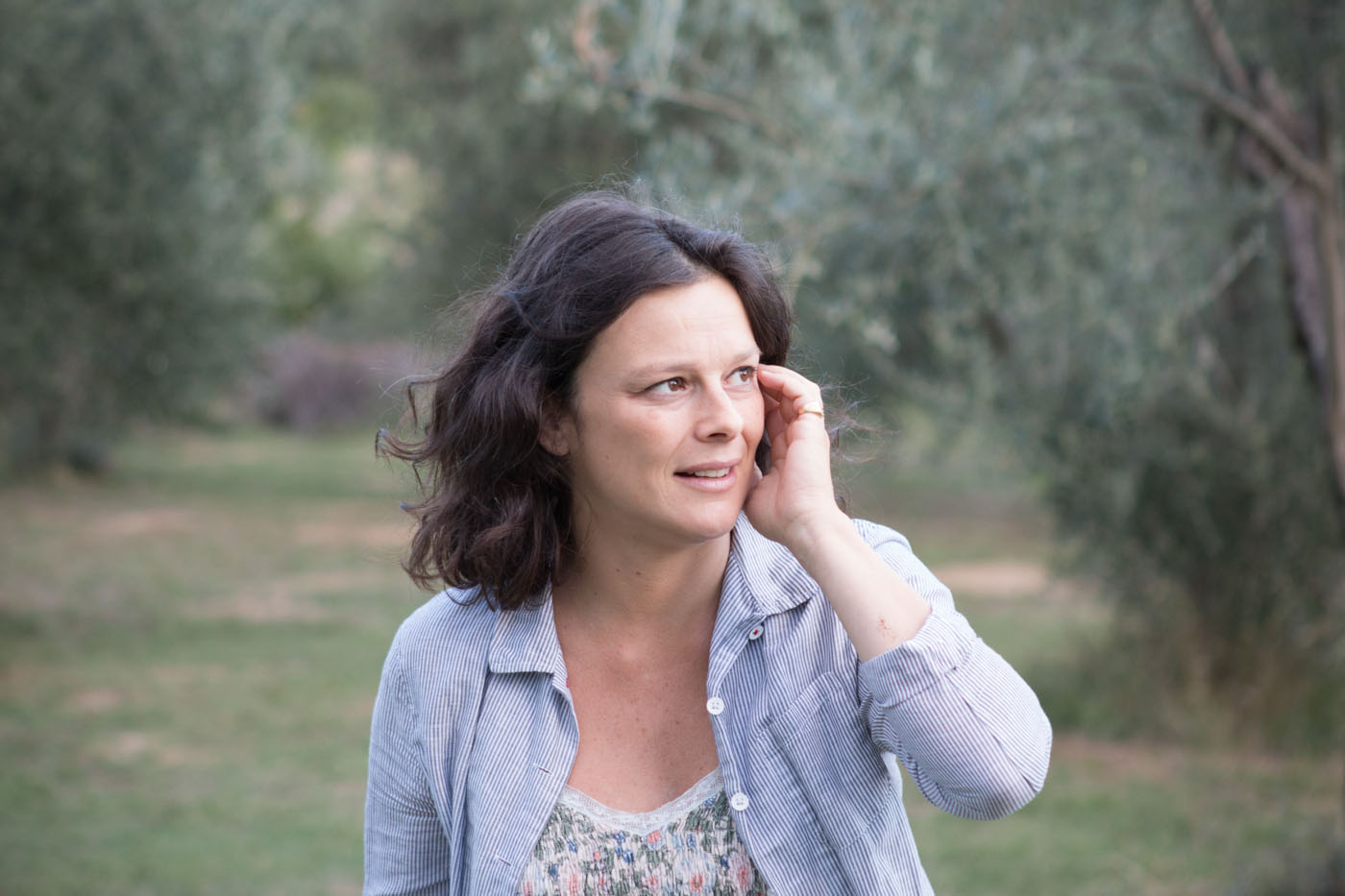
This all started several months prior at a serendipitous breakfast with my friend, Angela. Angela runs a company called Italian-Eye, where she and her partner, Olivia Fossombroni, specialize in bespoke Italian countryside gatherings. As soon as I mentioned my upcoming trip, she insisted on connecting me with Olivia. “They are saffron farmers,” she said. “You have got to meet real life saffron farmers!”
As it turns out, being a saffron farmer was only the beginning of the story, because rarely will you find a person and livelihood better matched than Guido Fossombroni and the world he has made for himself. He is a direct descendant of Vittorio Fossombroni, a noted mathematician, economist and engineer who specialized in the use of hydraulics and irrigation and who, in the early 1800’s, was responsible for draining the swampy and infertile Valdichiana––a region within Tuscany––and creating a 2300 square kilometer fertile valley floor where marsh had stood. He was a large landowner and liberal thinker who espoused the theory of physiocracy, an economic idea oversimplified to state that a nation’s wealth is derived solely from the value of agriculture. Through his life he collected land, titles and positions of authority.
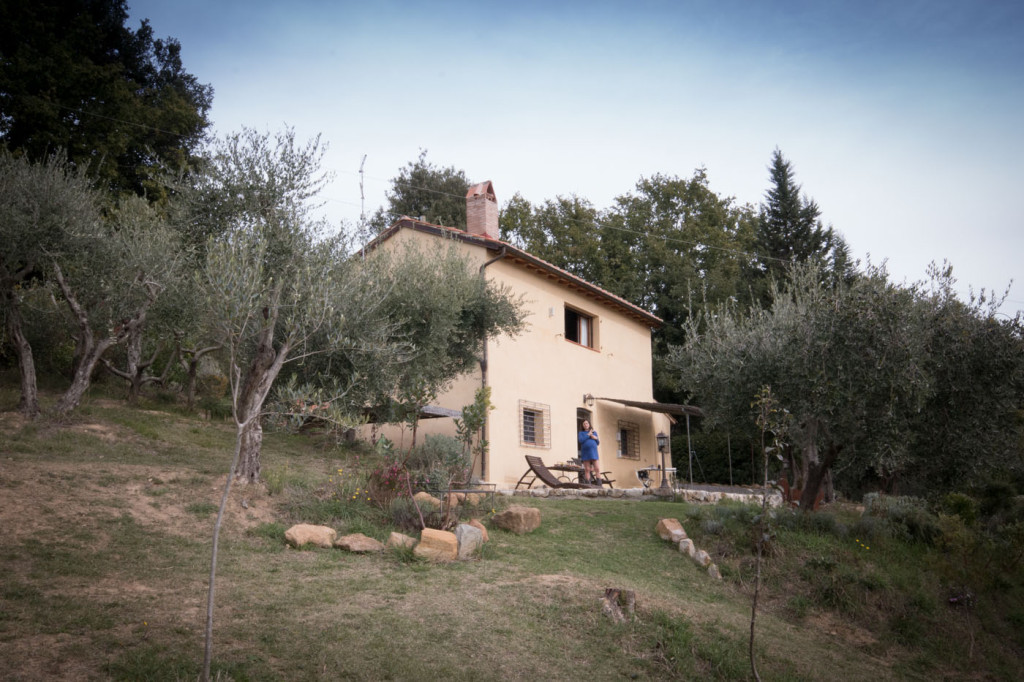
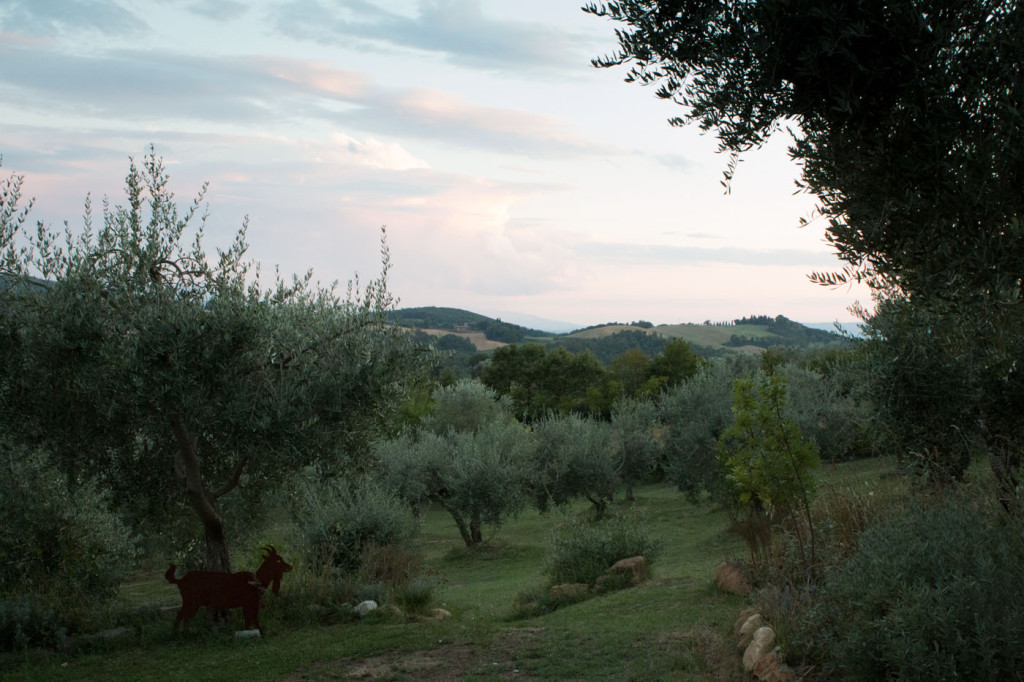
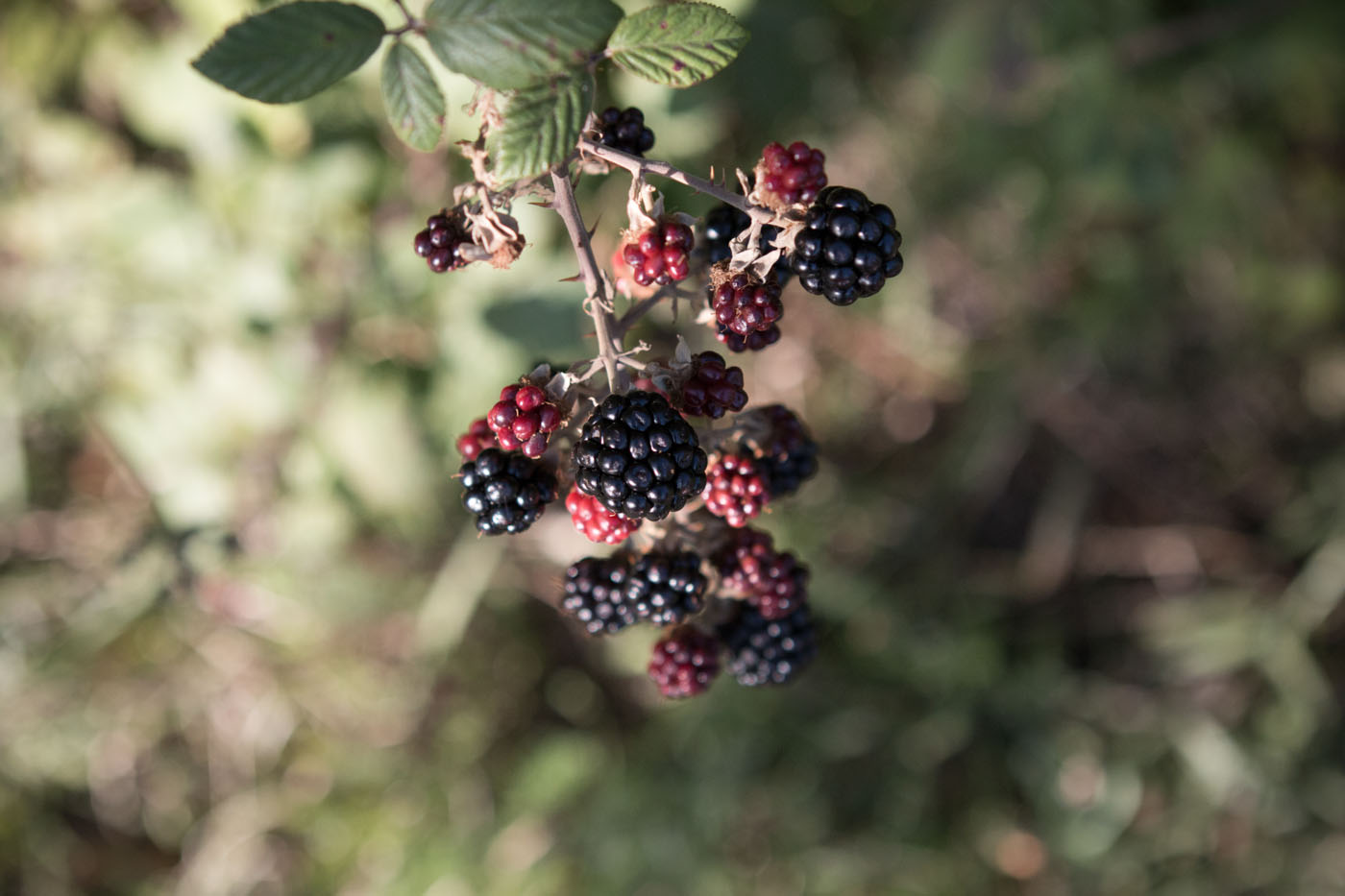
Sadly, the love of the land (and the ownership of it) largely died with Vittorio and there wasn’t another descendent with agriculture in his blood for 150 years––until Guido came along. Guido, inheriting both his ancestor’s title (that of “count”) and his passion, has always known his life would be dedicated to the land. He studied agronomy at university and later taught botany, worked in garden design and sold rare plants in a nursery. He is also a blogger for the ancient Accademia Dei Georgofili––a 250-year-old Florentine institution that promotes agriculture, economics and land preservation.
Olivia and Guido met when she was 23 and he was 19. They were drawn to one another immediately despite their apparent differences; Guido still studying agronomy while Olivia had an economics degree and was well ensconced into the world of fashion in Florence (not surprising––she is pretty, petite and like so many Italians, extremely fashionable). They were together ten years before marrying and having their son, Vittorio, and it was then that they decided to spend their energy and lives creating something special––something to be planted and harvested. They searched for and found a tiny farm––a single hectare, the Italian word for which is l’ettaro––in the Valdichiana, in which Guido’s ancestor and his son’s namesake had created that fertile valley 150 years ago.
And on that small plot of land overlooking rolling hills and olive trees, in the valley that his great-great-great-great-grandfather drained and crated as agricultural land, Guido and Olivia envision, grow and create their artisanal products: olive oil, saffron and saffron flavored jams. And at the forefront this time of year is the growth and harvest of saffron.
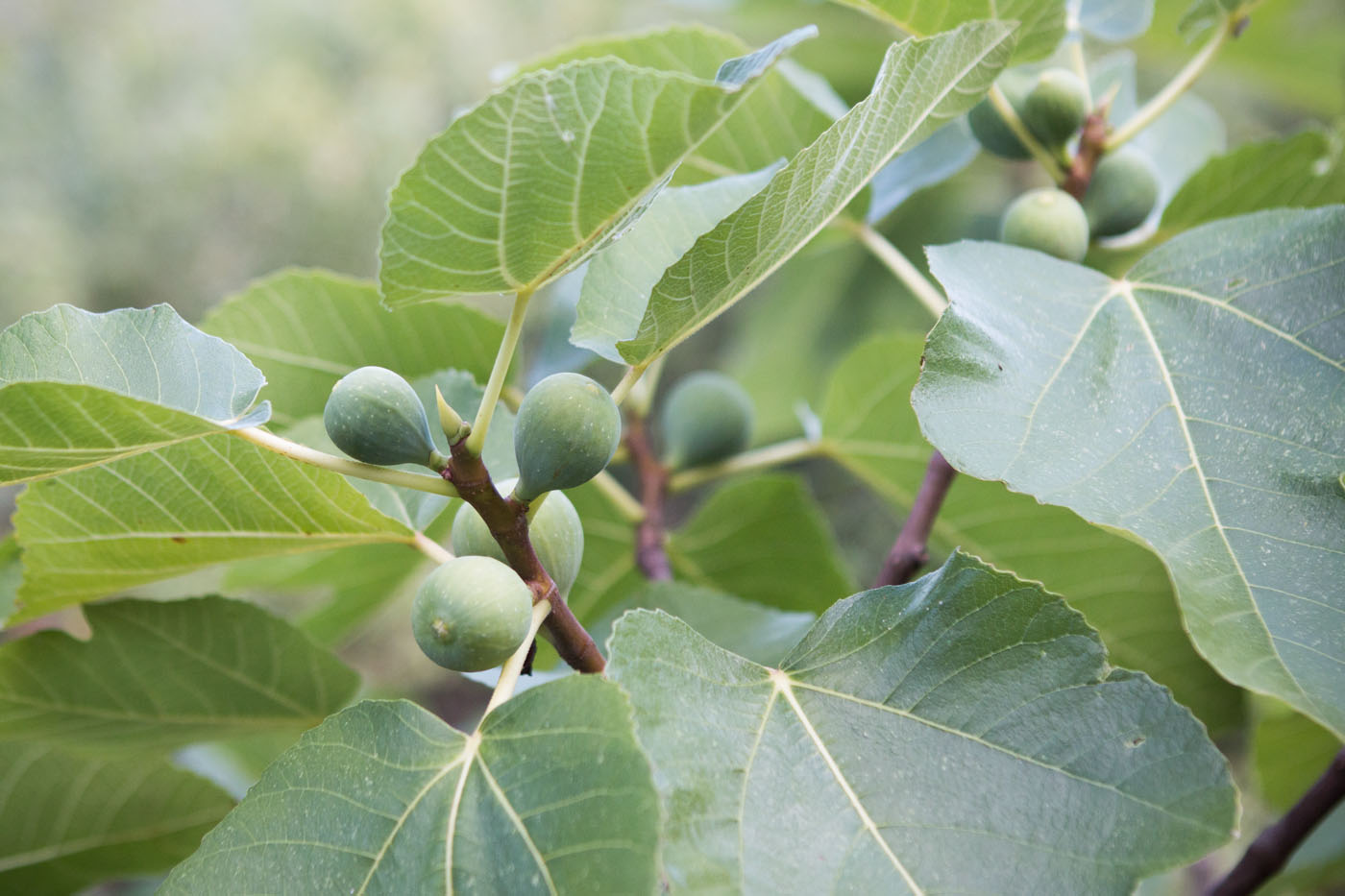
Saffron is the world’s costliest spice, and the reason for this is simple. A single purple flower, the crocus sativus, planted from bulb every year, produces three stigmas––or delicate red threads––that grow in the middle of the flower. The crocus must be picked and the stigmas retrieved by hand, then laid to dry before use. It takes approximately 200 flowers to produce one gram of saffron. In a classic recipe utilizing saffron, bouillabaisse from the south of France, you’d use about 30 stigmas––that’s ten flowers. To put it into perspective, saffron is about $1600 per pound, where cinnamon is about $6 per pound and vanilla pods range between $50 and $200 per pound.
At L’Ettaro, which is what Guido and Olivia named their farm, about a quarter of the land is dedicated to crocus growth. They plant in late August and the blooms come sometime in mid October to early November. From the beginning of October the land is carefully monitored for signs of life coming from the royal purple flowers. Once it springs forth, daily pickings commence. Olivia and Guido, along with Vittorio, go out first thing each morning for an hour and collect every flower. They then sit down and carefully peel the petals back exposing the three red stigmas for retrieval. They then dry the bounty before bringing them to an official weighing facility where the best threads are hand-selected and placed into jars for selling. The remaining are used as seasoning for the jams, the production of which is overseen by Guido’s mother, a retired doctor.
The small production is both demanding and fulfilling. “I love the manual labor because your mind can go anywhere. It is really, really relaxing. It is like painting,” Olivia explains. “It is a simple job so I can spend the mornings with Vittorio while he helps.”
Their product line includes an extra virgin olive oil, saffron and pear jam, saffron and onion chutney––and just plain saffron. When I visited a second time in mid-October, they were also trying their hand at saffron salami produced by a butcher that they regard as the best in the Valdorcia. It was stunning: gamey and oily, dense with flavor with a lingering hint of the distinctive saffron. Guido poured a glass of an inexpensive red wine, and the flavors came together on my palate with the chorus of olive trees and rolling hills as the backdrop.
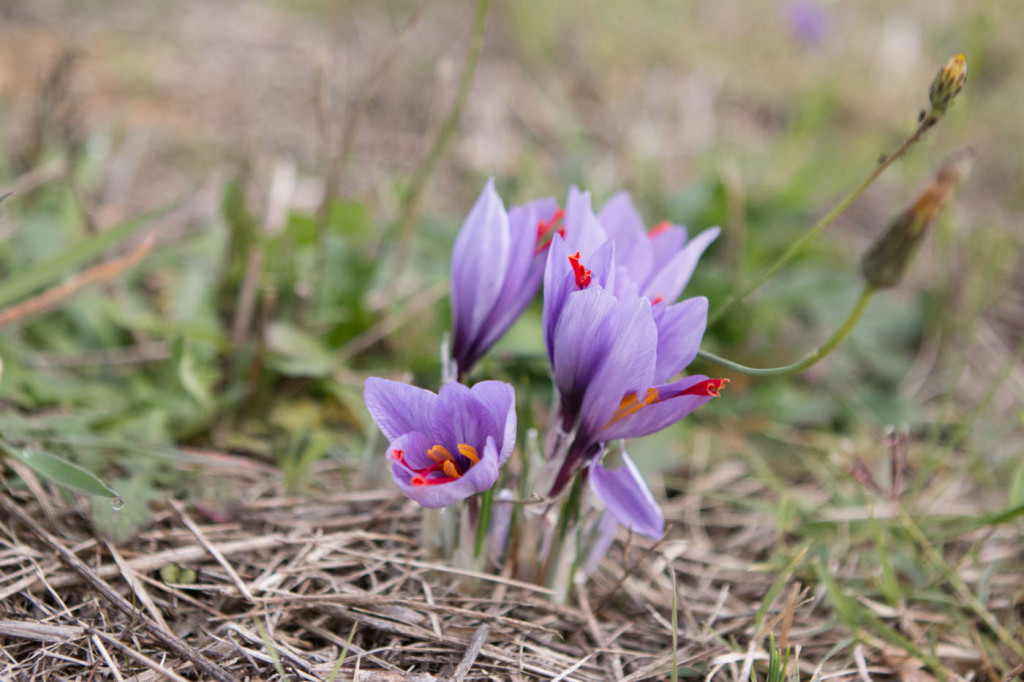
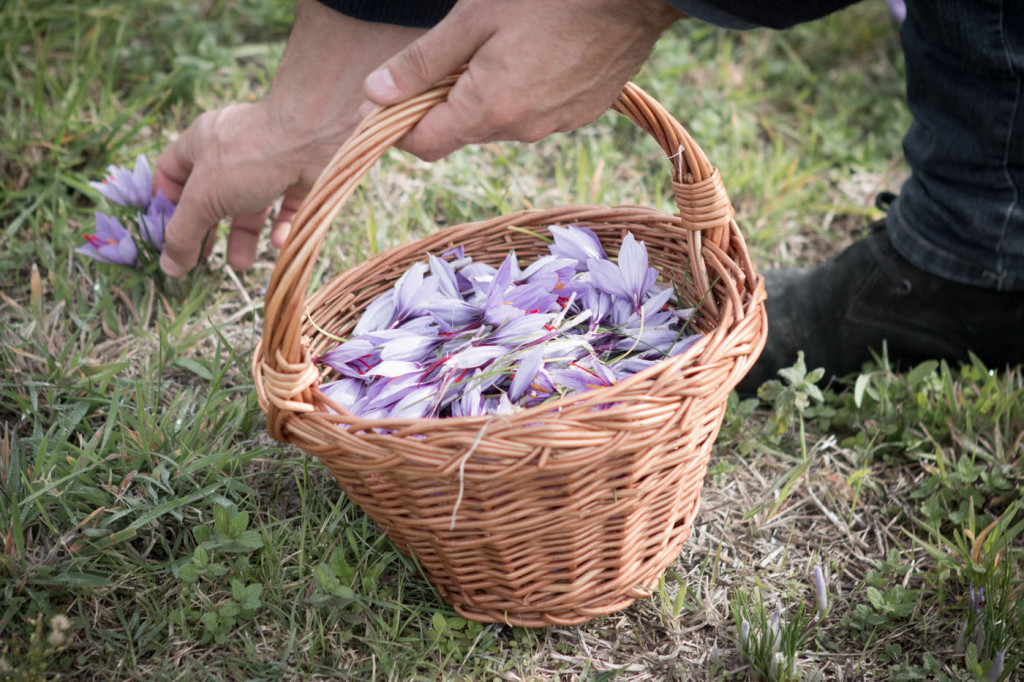
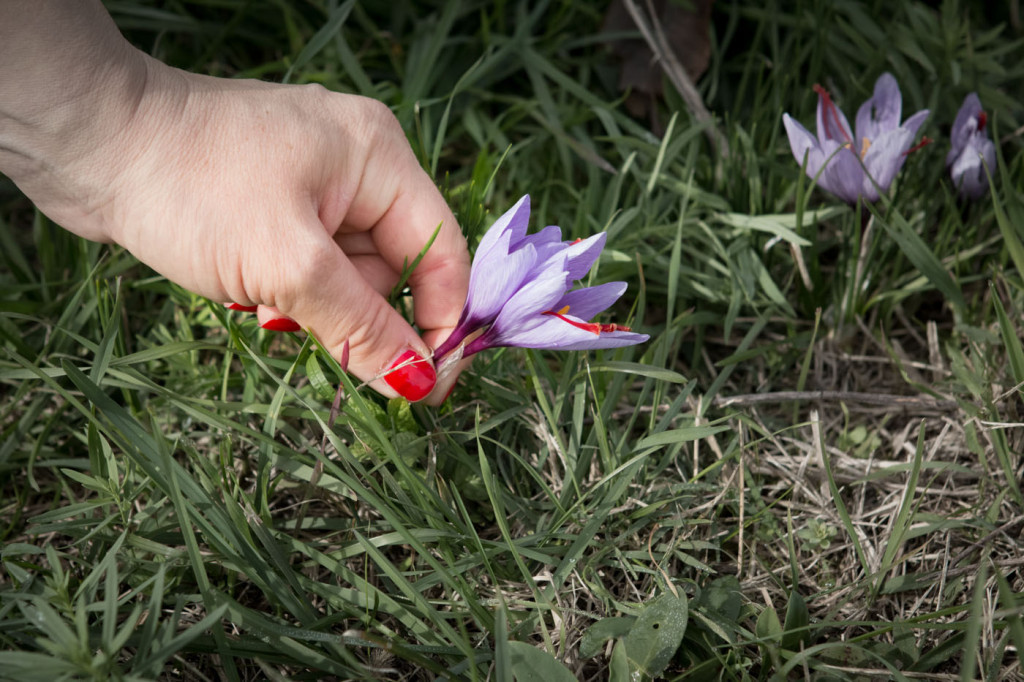
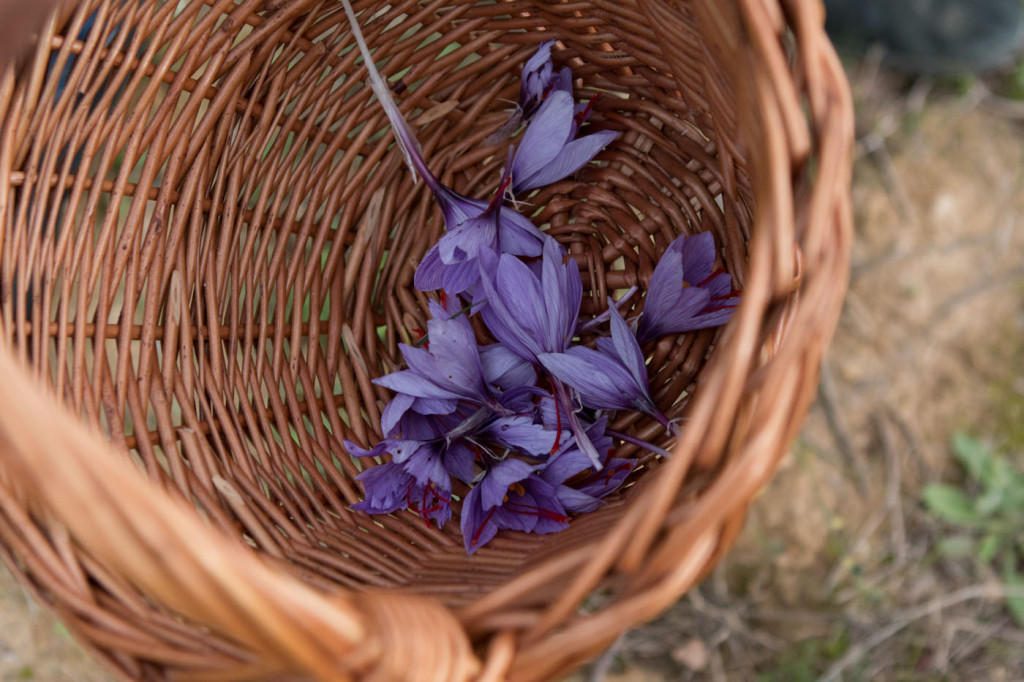
Guido may be the driving force behind L’Ettaro, but it is fully a family affair. It is not in her blood, like it is Guido’s, but Olivia is committed nonetheless. “It is amazing when you find yourself in a completely different world and you have think about how to make things grow for you and your family, even in a field you don’t know at all.” Olivia says while deftly removing the stigmas from flowers––one, then another, then another. She barely looks up and I think she may be unaware of the parallel she is drawing between their business and farming.
The philosophy of L’Ettaro is something that is considered and lived on a daily basis. The carefully chosen name, L’Ettaro, reflects the single hectare of land they farm. Their challenge, and thus their philosophy, is to make their living and their life, within the niche market of locally grown, fully organic handmade products. For Guido, that means continuous research for high quality products that can be developed without the need of machines and numerous employees. For Olivia, it means marketing their products to people who understand that philosophy. So far it has worked for saffron and extra virgin olive oil (they sell their olive oil production before they even finish the bottling), and they constantly work on new ideas––which is largely Guido’s department. He has training, but also almost a sixth sense about the farm in understanding what their soil can produce, what it needs and what it can stand to have depleted.
Despite their ardent connection to the land, Guido and Olivia are also an urban thirty-something couple. They split their time between the farm and Florence and they both admit that life is quite different in the two places. In Florence, Vittorio goes to school and Guido visits the shops to deliver products and discuss ideas with the shopkeepers. Olivia develops the marketing and design side of L’Ettaro, while also working with Italian-Eye. The contrast of the city and the farm seems to energize her, but she also recognizes the trade offs. “Here [on the farm] we are relaxed, we have different times of the day, we get up earlier.” She uses the brain space for inspiration, ideas for new product recipes, and also making contacts for Italian-Eye. She calls it a double life.
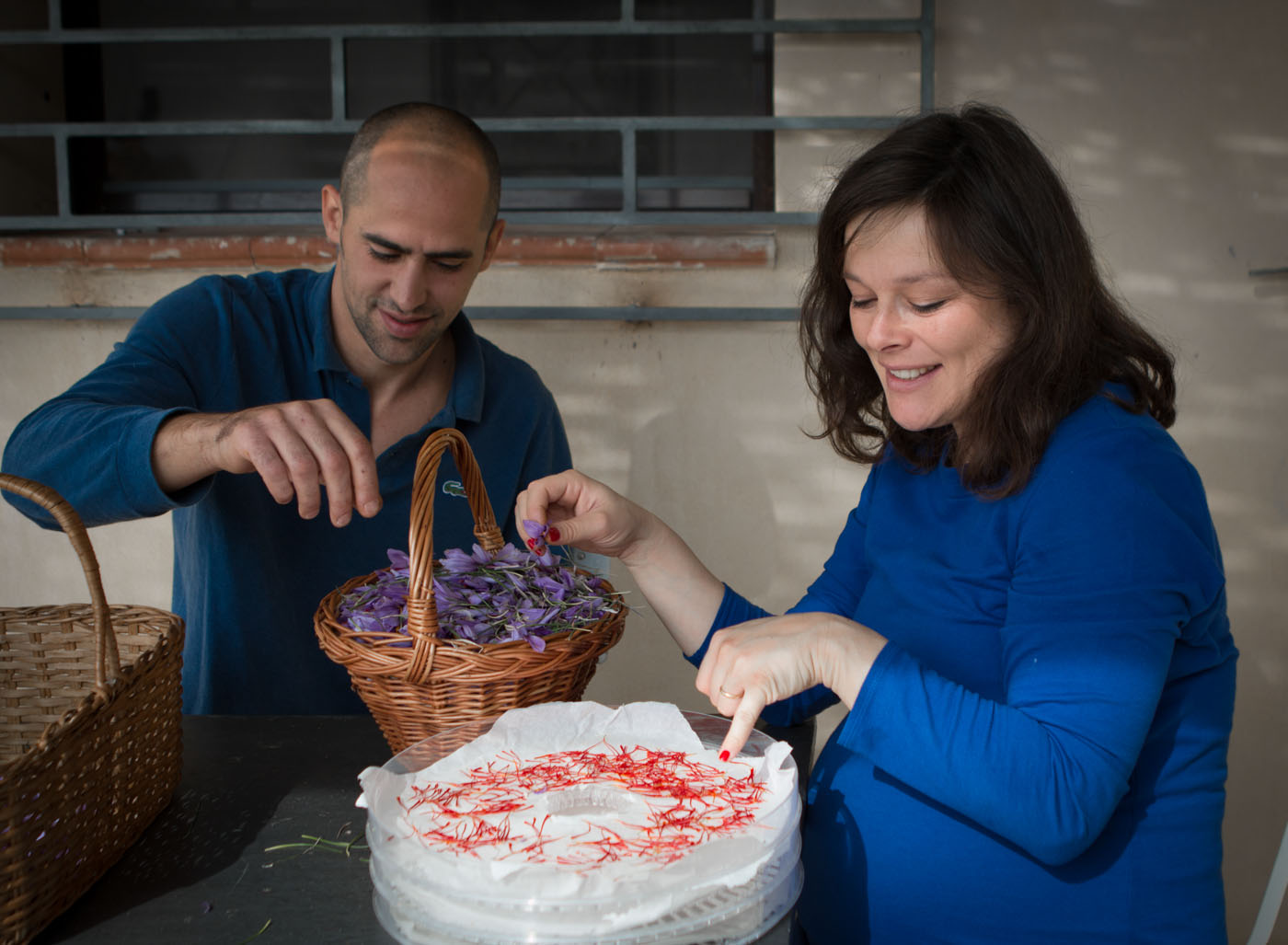
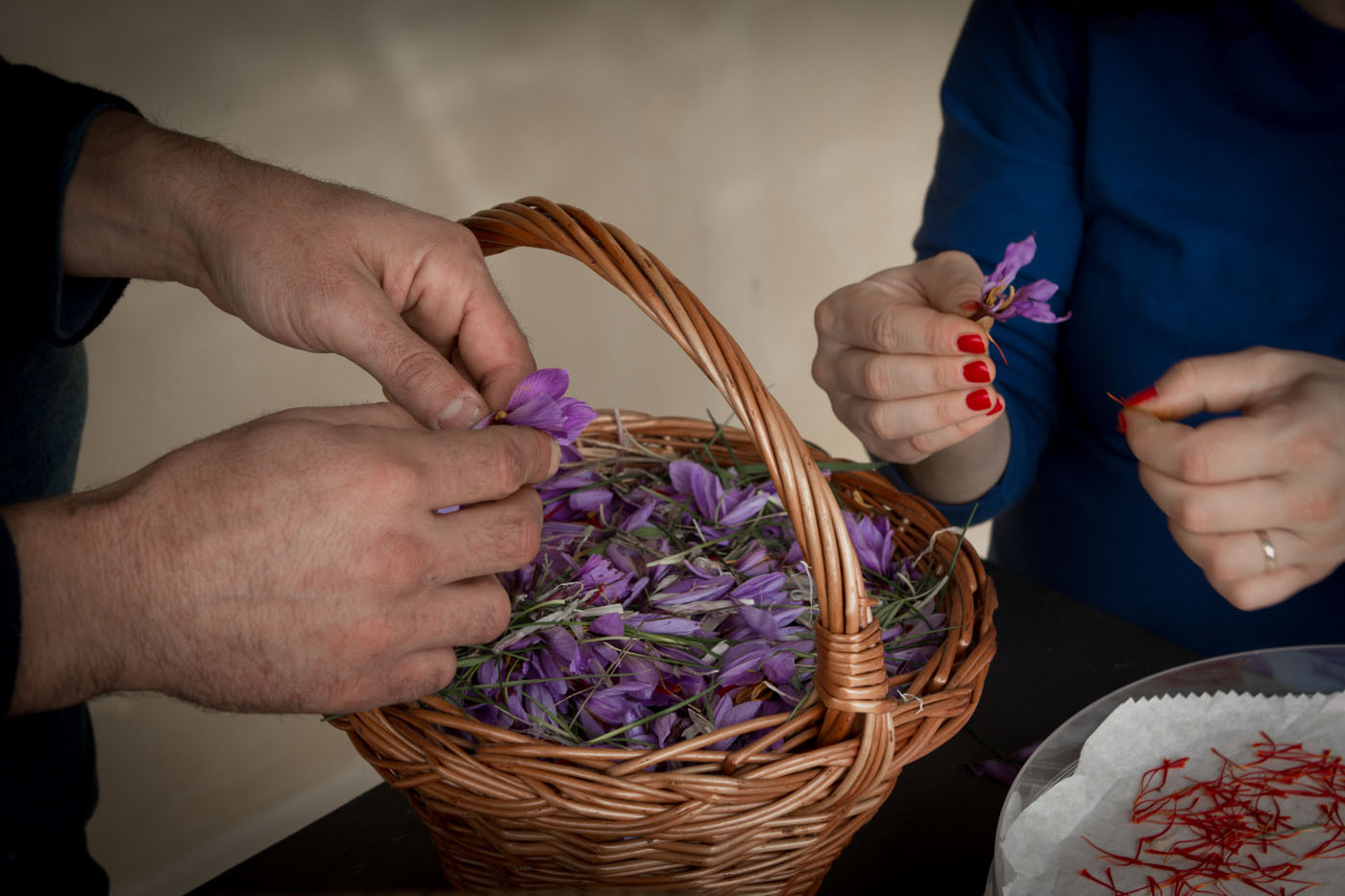
It will be complicated as Vittorio grows. Though they want him educated in Florence, they are determined to allow L’Ettaro continue to thrive while remaining at the helm. The couple wants to spread the philosophy of L’Ettaro––personally grown, harvested and created with Guido’s heart at the center of it. A true love of the land, love of history and of their unique place in the world, with no desire to become a large producer. They understand that not everyone will like their product, but they pour their soul into it and believe that the market will reward them.
“We don’t plan too much the future,” Olivia says with a loving, if slightly heavy heart. “When things change, we will change with things. For us that is okay. Even planning can give you anxiety; we know what we like, and we will try to make what we like most.”
—
Four-year-old Vittorio bent down and softly grasped a purple flower at the base, just above the stem. He pulled it firmly but gently and moved it from his right hand into his left where he cupped it protectively. He repeated the process twice more, then stood up and looked for his father who was holding the basket. After delivering his bounty, he returned to his row of crocuses, repeating the process until his row was clear of the flowers and he was able to start on a new one. His father worked much faster, and together it took them about an hour to clear the small area. They walked up to the house hand-in-hand, Vittorio skipping and Guido taking stock of the surroundings.
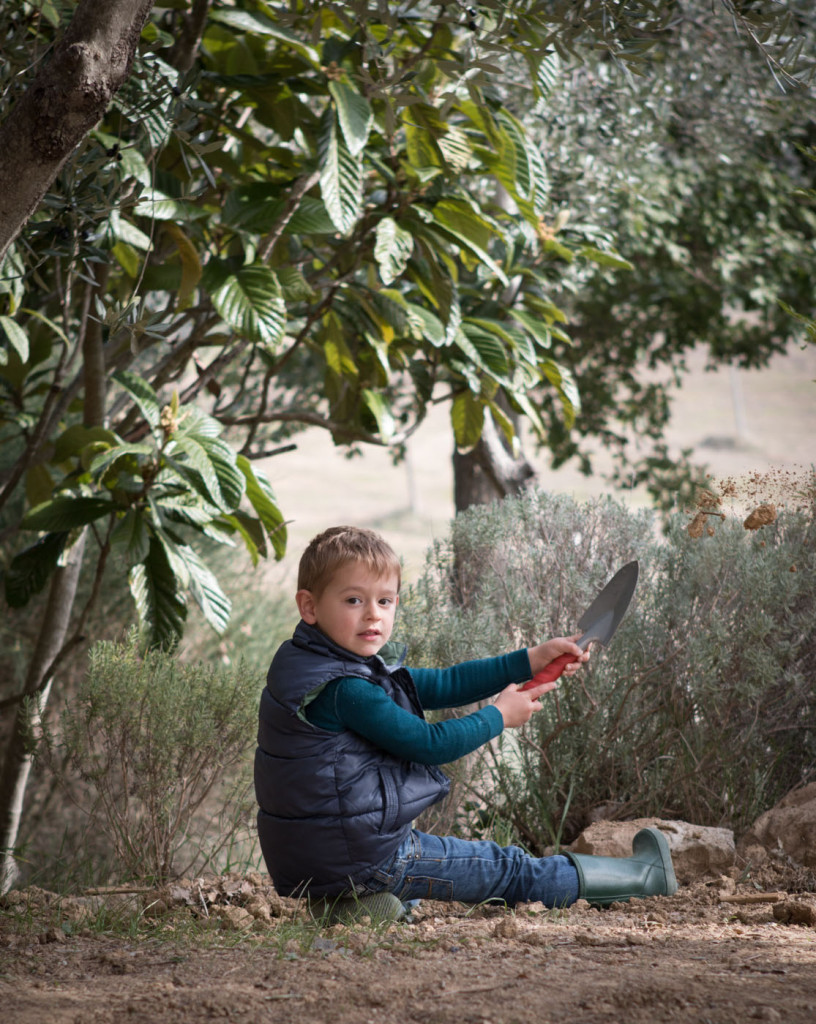
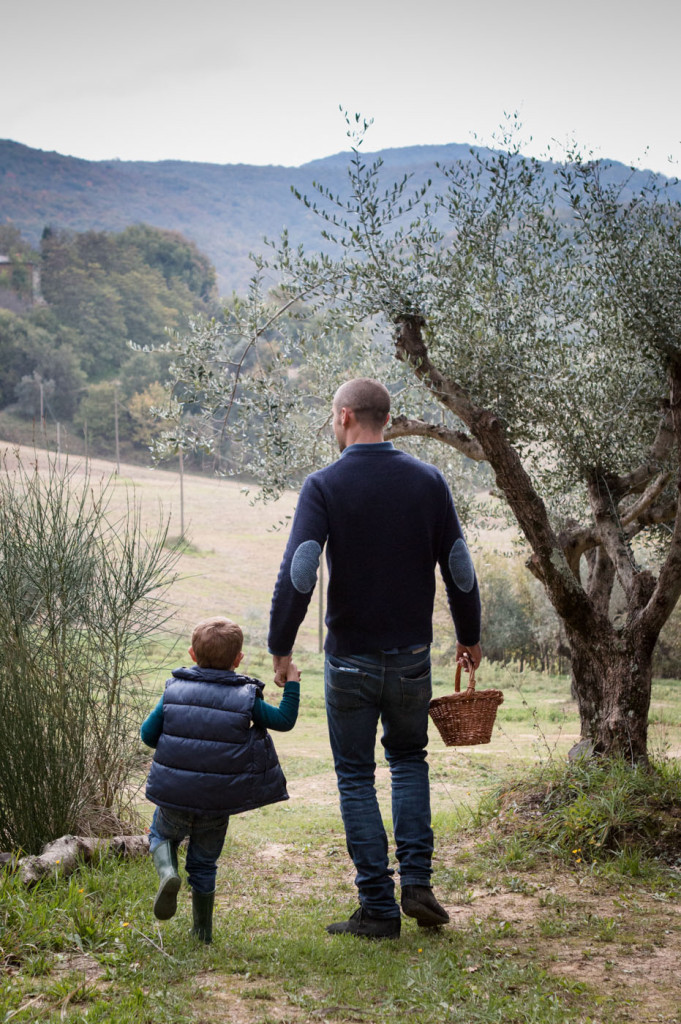
As we depart for the final time, Olivia stands at the gate with her hand on a very pregnant belly and gives us a beaming smile. They are off to Arezzo for a meeting that afternoon, then to Florence where they will wait for the baby to come. “What is the due date?” I ask.
“I don’t know,” Olivia says. “We will just have to see what happens”
Olivia and Guido welcomed Viola Fossombroni, a happy and healthy baby girl, into the world on October 29th, 2015.

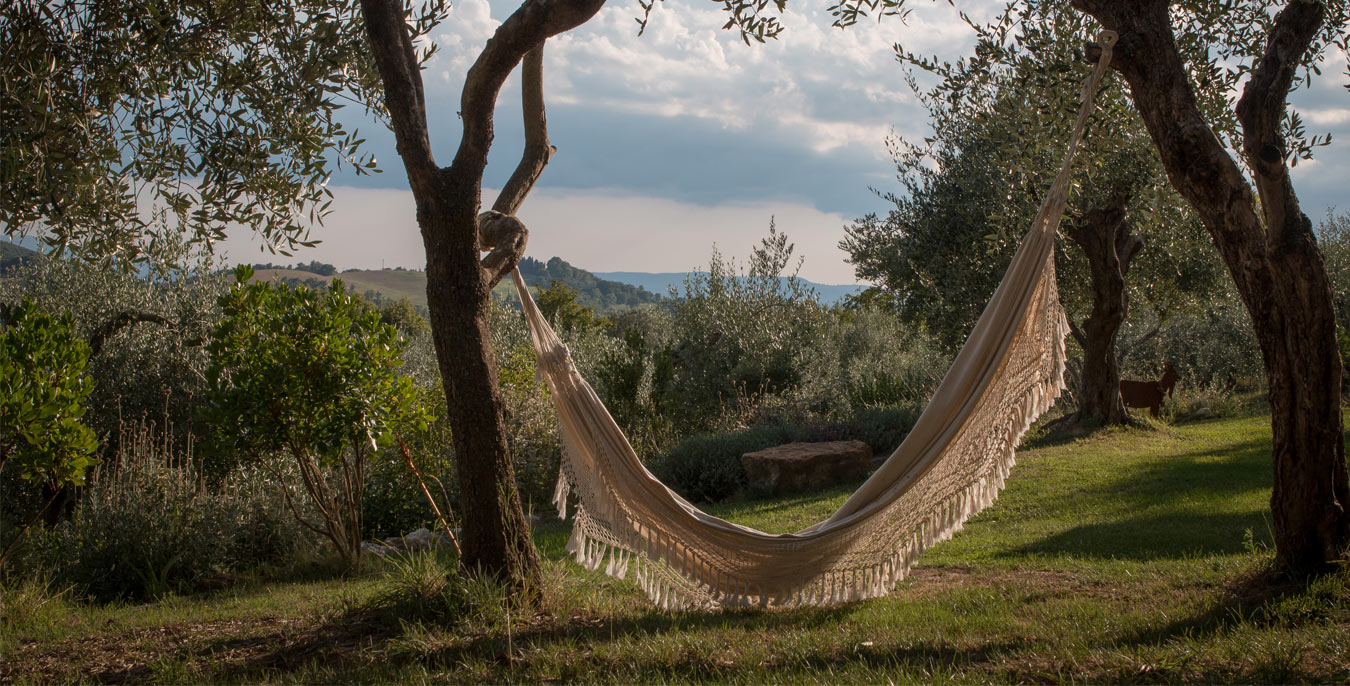

Our comments section is for members only.
Join today to gain exclusive access.